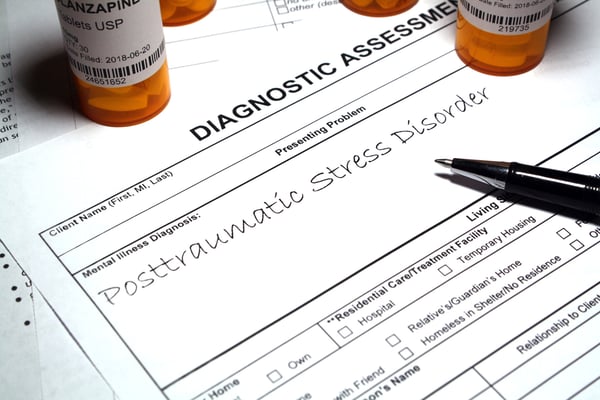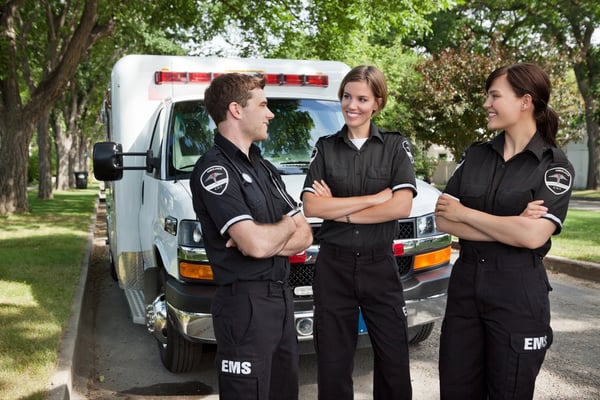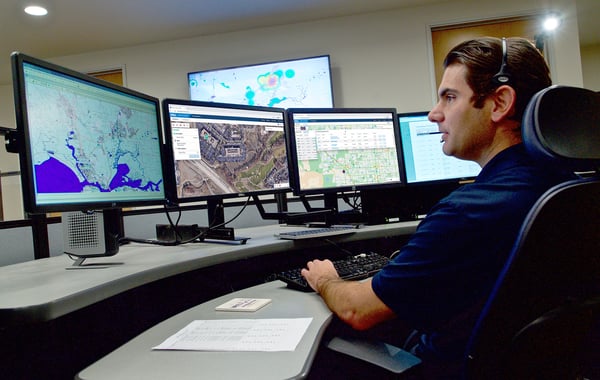Meet the New ZOLL Dispatch and ZOLL Respond CAD Solution
First Responders: At the Forefront of Disaster & PTSD
Recognize Post-Traumatic Stress Disorder signs and symptoms to better protect your crew members (5 min read) If you’ve missed the correlation between serving as an emergency responder and being at increased risk for Post-Traumatic Stress Disorder (PTSD), it’s time to pay attention
Was this information valuable?

Recognize Post-Traumatic Stress Disorder signs and symptoms to better protect your crew members
(5 min read) If you’ve missed the correlation between serving as an emergency responder and being at increased risk for Post-Traumatic Stress Disorder (PTSD), it’s time to pay attention. First responders are the “front lines” men and women of our communities, responding to incidents and disaster before anyone else. While doing so, it’s not unlikely for them to encounter death, gruesome injuries, grief, pain and direct exposure to various threats.
For these reasons, the Substance Abuse and Mental Health Services Administration estimates that about 30% of first responders develop behavioral health conditions compared to about 20% of the general population. Women are at even higher risk than men.

What is PTSD?
The American Psychiatric Association describes Post-traumatic Stress Disorder as a “psychiatric disorder that can occur in people who have experienced or witnessed a traumatic event such as a natural disaster, a serious accident, a terrorist act, war/combat, rape or other violent personal assault.” First responders regularly experience traumatic events. This is part of their job duty, and something that is essential to assisting the community, but also something that can leave behind negative impacts. Those suffering from PTSD after exposure to a traumatic incident might experience:
- Flashbacks and nightmares (even long after the event has occurred)
- Intrusive thoughts (like repeatedly going over the traumatic occurrence, even involuntarily)
- Intense feelings of anger, fear, sorrow or detachment from others
- Unplanned, strongly negative reactions in response to things that may remind them of the traumatic incident
- Difficulty sleeping and keeping a focused, clear mind, or being easily startled
What puts emergency responders at increased risk for PTSD?
There are a few things that can increase the risk factors for PTSD in addition to experiencing traumatic events. These factors include:
- Being a “career emergency responder” (by spending a significant number of years in this role)
- Holding a supervisory position within your department
- Having a close proximity to death during the traumatic event
- Having underlying mental health issues before exposure to the traumatic event
- Being unmarried or having little to no support system available
- Working extended shifts (and not getting enough recovery time/sleep)

What are the first signs of PTSD?
Often, the very first sign of PTSD is nightmares. These can easily be shrugged off after exposure to a traumatic event, but they shouldn’t be. Instead, they should be looked at as an important red flag letting those who experience them know it is time to take action.
Emergency responders experiencing nightmares regularly should seek help quickly. These unintentional flashbacks can plague sleep, making matters worse very rapidly. Those experiencing nightmares are encouraged to work with a therapist to discuss the event and attempt to liberate their mind from reliving it over and over. In addition, working with a sleep specialist may be helpful.
If unrecognized or “swept under the rug,” PTSD can negatively impact not just the emergency responders themselves, but also their loved ones, crew members, friends and family.
How can PTSD be avoided or cured?
There is no simple “cure” for PTSD, but according to the Anxiety and Depression Association of America (ADAA), studies have been done to compare individuals who have experienced the same traumatic event in order to look at the factors that help some deal with these events better than others. This is important for first responders to think about, because they are placed in situations where experiencing trauma is likely unavoidable. Because they cannot prevent exposure to trauma, they have to more carefully focus on what to do before and after this exposure.
ADAA noted that, “A review of the literature on resiliency and recovery following traumatic events identified the following as protective factors for developing PTSD, meaning those who engaged in these [behaviors] did not endure long-term suffering”:
- Regular and consistent contact with and support from loved ones or important individuals
- Open discussion of trauma with loved ones (and disclosure of details of the occurrence)
- Mentally identifying as a trauma “survivor” rather than as a trauma “victim”
- Emphasis on using positive emotions and making time to laugh
- Consciously looking for positive meaning from the encountered trauma
- Helping others around you to heal from similar trauma
- Focusing on an understanding that you are in control of your feelings and able to cope and heal
Overall, staying open and communicating showed huge benefits for those exposed to trauma, as well as looking for ways to use the unfortunate experience as a means to help others keep moving forward. These tactics could not only be your ticket to overcoming PTSD after its onset, but quite possibly help you avoid it altogether.
Additionally, those suffering from PTSD may be able to obtain medical treatment that could provide some relief. A few possible pharmacologic approaches are described in this Psychiatric Times article, including treatment with low-dose cortisol. The article notes that “During a 3-month observational period, 10 mg/d of cortisol was administered orally for 1 month to 3 patients with chronic PTSD in a double-blind, placebo-controlled, crossover design. In each patient, there was a significant cortisol-related reduction of at least 38% in one of the daily rated symptoms of traumatic memories…”

Summing things up
First responders often cannot avoid exposure to traumatic events, and with this exposure comes a high risk for the development of Post-Traumatic Stress Disorder (PTSD). Being aware of the signs and symptoms, however, can help these individuals and their crew members to take action and heal.
Working to keep open communication within your organization can make a huge positive difference, especially following any traumatic experiences. In addition, looking for the “silver lining” in even the most difficult situations can help first responders to more effectively help others and themselves at the same time. If they have experienced something horrible, for example, and can use that experience to help others who are suffering after similar experiences, it somehow makes the horrible experience more valuable or “worth it.”
For additional tips and outlined procedures to assist with fire and EMS personnel behavioral health issues, print our free bulletin here. VFIS is proud to be America’s leading insurance provider for emergency organizations. With more than 750 years of combined experience serving as ESOs, we not only live the industry…we respect it and protect it, too.
Related Posts
Collect More Revenue Faster: The Pivotal Role of Clear, Concise, and Complete Documentation
ZOLL Pulse Blog
Subscribe to our blog and receive quality content that makes your job as an EMS & fire, hospital, or AR professional easier.
ZOLL Pulse Blog
Subscribe to our blog and receive quality content that makes your job as an EMS, fire, hospital, or AR professional easier.




